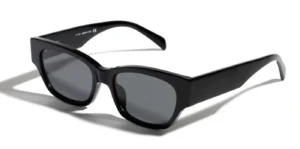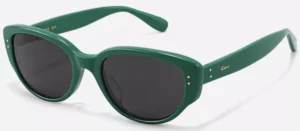Introduction
With China established as the world’s foremost manufacturing hub across countless industries, it comes as no surprise that the country plays a pivotal role in producing sunglasses sold globally. In fact, China Sunglasses manufactures an estimated 70% of the world’s eyewear across both luxury brands and affordable mass-market labels.
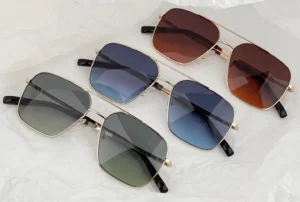
In this comprehensive guide, we will explore the extensive sunglass manufacturing ecosystem that has developed across China over the past several decades. You will learn about the major factories cranking out both cheap frames by the millions and specialized production of high-end sunglasses rivaling quality levels from Europe. We will analyze how China came to dominate eyewear output through manufacturing prowess and cost advantages as well as assess current shifts of some brands looking to diversify supply chains beyond China.
Topics covered include:
- The emergence of China as the sunglass factory in the world
- Geographic manufacturing hubs across China’s industrial regions
- Mass market manufacturers serving value brands
- High-end factories focused on luxury detailing
- Quality control and production engineering excellence
- Comparing capabilities across Chinese factories
- Working with producers on product development
- Managing complex supply chains and lead times
- Ensuring social compliance and intellectual property protections
- Competitive pricing advantages over other countries
- Analyzing the impact of geopolitical trade tensions
- The potential for reshoring sunglass production back home
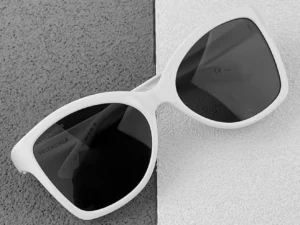
By the end, you will have a comprehensive perspective on the role China plays in the global sunglasses industry as both a manufacturing juggernaut and also center of innovation pushing boundaries. Let’s delve into made-in-China eyewear!
Chapter 1 – The Emergence of China as the Sunglass Factory to the World
China’s rise to manufacturing sunglasses for nearly every major brand reflects its broader industrial explosion:
- 1980s Reform Era – Special economic zones attracting foreign factories with tax and duty incentives.
- 1990s Investment Boom – Massive infrastructure spending to support manufacturing.
- 2000s Production Expertise – Homegrown factories matching quality benchmarks.
- 2010s Global Dominance – China now produces the majority of the world’s eyewear.
- Cost Efficiencies – Labor, land, facilities, and component supplies prove far cheaper.
- Vertical Integration – Full sunglass supply chain clusters accelerate production.
- Government Support – Subsidies and land grants incentivize factories.
- Innovation Culture – Chinese brands like Reinshaw introduce new innovations.
Positioned at the nexus of incentives, infrastructure, and ambition, China rapidly emerged as the sunglass source for established brands and startups alike seeking the optimum balance of quality and cost efficiency.
Chapter 2 – China’s Major Eyewear Manufacturing Regions
Sunglass production thrives in industrial epicenters like:
- Guangdong – The manufacturing heartland and epicenter of eyewear with massive facilities across the Pearl River Delta.
- Zhejiang – China’s second largest optical production hub with hundreds of factories clustered around Yiwu.
- Jiangsu – Fast-growing Nanjing region gaining a reputation for premium quality.
- Shanghai – Mix of design studios and high-end manufacturing.
- Fujian – Competitive labor rates and port access advantages attract brands.
- Shandong – Emerging hub combining optics R&D with manufacturing scale.
Proximity to component suppliers, logistics infrastructure, and experienced talent drives clustering in these zones where sophisticated manufacturing ecosystems exist.
Chapter 3 – Mass Market Sunglass Manufacturers in China
China’s vast manufacturing capacities allow for the production of incredible volumes of discount and private-label sunglasses:
Wenzhou Wanxiang Optical
With over 200,000 square feet of factories, Wenzhou Wanxiang cranks out 10,000 units daily across multiple product lines from kids’ frames to safety glasses. They thrive on high efficiency to deliver value.
Mingshi Optical
Powerhouse producer in Guangdong manufactures over 100,000 sunglasses daily across 300 production lines. They focus on flexibility to adjust capacities quickly.
Creative Optics
One of China’s largest optical manufacturers churning out 20,000 units per day. Strengths include quick turn prototyping and specialty decorative effects.
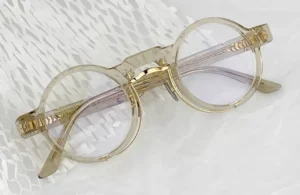
Ying Sheng Eyewear
Capable of producing 1 million units monthly, Ying Sheng exemplifies China’s manufacturing prowess through stringent quality management fueling extreme volumes.
Rising International Optics
Zhejiang factory leveraging digital manufacturing integration to enable rapid sampling, small batch flexibility, and design modifications on the fly.
This abundance of capacity to hit any economy of scale makes China the go-to for affordably priced sunglasses.
Chapter 4 – High-End Sunglass Manufacturing in China
China’s factories also produce luxury sunglasses rivaling top-tier quality:
Kuang Yue
Located in Wenzhou, Kuang Yue produces advanced acetate frames with specialty multi-layer laminations and hand polishing perfect for premium positioning.
Union Optech
Shanghai factory focused on precision metals including titanium, monel, and stainless steel finished to flawless tolerances for luxury brands.
Yantai Andre Optical
Specialized technology like PVD vacuum plating allows premium treatments from coloring to durability enhancements ideal for high-end styles.
BiDon
Leveraging digitized workflows to craft intricate women’s designs using proprietary ultra-thin metals and decorativeriveting perfect for luxury buyers.
Riyue Optical
Experts in limited edition production run using rare natural materials like buffalo horn, malachite, and obsidian achieving truly bespoke exclusivity.
China’s expertise in crafting everything from intricately laminated acetates to ultra-lightweight titanium dispels myths of the country lagging on higher-end quality.
Chapter 5 – Rigorous Quality Control and Production Engineering
Sophisticated processes match international benchmarks:
Automation – Robotics boost output consistency and precision.
Measurement – Advanced metrological tools like coordinate measuring machines ensure perfect fit and finish.
Inspection – 100% product inspections at multiple process stages not just finished output.
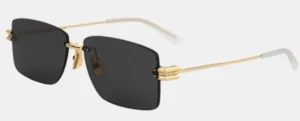
Testing – On-site labs rigorously validate durability, optics performance, and protection.
Traceability – Batch coding allows pinpointing manufacturing origins in the event of defects.
Process Control – Statistical process control methodology to spot anomalies quickly.
Certification – China has more ISO-certified eyewear factories than any country demonstrating stringent quality management.
China’s fixation on quality helps explain its manufacturing leadership across so many categories from electronics to automobiles and now sunglasses.
Chapter 6 – Comparing Capabilities of China’s Eyewear Factories
Not all sunglass factories in China are created equal:
Scale – The largest producers like Luxottica-owned Peerless Joyce manufacture at volumes impossible elsewhere, producing over 60 million pairs annually across 4 facilities.
Specialization – Factories in China also focus on niche production like kids’ frames or sports performance shields.
Materials – Certain factories develop expertise in specific materials such as advanced polycarbonates or precision metals.
Trend Focus – Some producers obsess over the latest fashion styles and color forecasting to help brands stay ahead.
Co-Design Partnerships – Factories like BiDon collaborate intensely with clients on product engineering and design innovation.
Electronics Integration – Factories around Shenzhen integrate microchips, batteries, and even augmented reality.
This range of differentiated capabilities provides a manufacturing solution tailored for every sunglass niche and business model.
Chapter 7 – Working With Chinese Factories on Product Development
Partnerships with producers enable deeply customized outputs:
Prototyping – Leverage deep mold libraries and CNC tooling to quickly generate multiple design iterations.
Material Guidance – Factories suggest innovative or sustainable materials aligned with product goals.
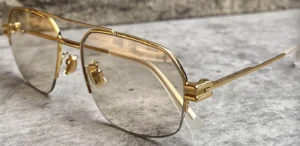
Co-Engineering – Collaboratively solve challenges around weight balancing, fit, optics, etc.
Trend Insights – Tap into insider knowledge on styles, colors, and patterns gaining traction.
Testing Assistance – Factories thoroughly validate concepts against standards.
Production Personalization – Specialized decoration options like laser engraving and enamel detailing for unique flourishes.
Manufacturers provide a symbiotic relationship helping brands bring ambitious visions to fruition through aligned problem-solving.
Chapter 8 – Managing Complex Supply Chains and Lead Times
Navigating production logistics requires planning:
Component Sourcing – Lenses, hinges, nose pads, and tooling flow from interdependent suppliers.
Procurement Times – Order key inputs like custom acetate slabs or rare metals months before assembly.
Shipping Times – Factor 1-3 weeks in ocean transit each way between supplier factories.
Buffer Stock – Keep a safety inventory of components to absorb supplier delays.
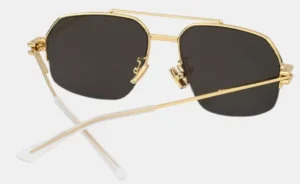
Quality Control – Full end-to-end inspections ensure no defects propagate downstream.
Expedited Delivery – Air freight cuts transit to under a week but adds substantial costs.
Forecasting – Account for production ramp-up time lagging behind demand spikes.
There are always contingencies but China’s density of suppliers minimizes lead time risks relative to other locations.
Chapter 9 – Ensuring Social Compliance and Intellectual Property Protection
Responsible sourcing from Chinese factories includes:
Social Audits – Regularly validate fair labor conditions and business ethics.
Certifications – Require social compliance certs like BSCI or SMETA.
Code of Conduct – Factories must agree to ethical business standards.
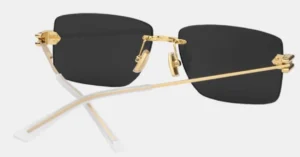
Confidentiality – Strict non-disclosure agreements must protect product designs.
Data Security – Encrypted digital communications safeguard private information.
Traceability – Serial number tracking helps combat counterfeiting.
Oversight – Schedule frequent site visits and production assessments.
China offers excellent manufacturing partners but brands must undertake due diligence to align on values.
Chapter 10 – China’s Pricing Advantages Over Other Countries
Lower manufacturing costs stem from:
Labor Costs – China’s vast workforce keeps compensation lower than most nations.
Real Estate – Factories access inexpensive industrial land and facilities, especially in second-tier cities.
Proximity – Supply chains dense with competitors drive component prices down.
Energy – Heavily coal-dependent China traditionally maintained cheap electricity costs.
Scale – Enormous order volumes provide bulk savings.
Incentives – Grants and tax breaks incentivize manufacturing expansion.
While costs are rising, China sustains advantages making the country hard to beat on overall sunglass production pricing.
Chapter 11 – The Impact of Geopolitical Trade Tensions
Increasing trade barriers add uncertainty:
Tariffs – Added import duties make Chinese goods more expensive abroad. Brands pay the costs.
Sanctions – Bans on Chinese tech acquisitions hamper access to innovations.
Sourcing Diversification – Companies feel pressured to expand supply chains in other countries creating production redundancies.
Reshoring – Some brands bring manufacturing back home through automation but sacrifice scale and labor cost benefits.
While nearly impossible to leave China completely, geopolitics prompt brands to balance risks through location diversification.
Chapter 12 – The Potential for Reshoring Sunglass Production
Made in USA appeals but relocating remains difficult:
Automation – Robotics offset higher domestic labor expenses allowing economically viable high-end manufacturing.
New Materials – Advanced polymers and alloys enable more technical differentiation.
Government Incentives – Subsidies and grants defray some costs for bringing production back home.
Focus on Design – Emphasize exclusive styles and branding rather than competing on bargains.
Local Supply Chains – Sourcing all components regionally smooths logistics.
Limited Liability – For affordable sunglasses, overseas production remains essential to control costs.
While select premium brands achieve success in bringing production back home through automation and exclusive value propositions, high production volumes still necessitate China’s manufacturing might.
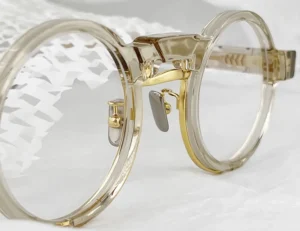
Conclusion
Given its enormous production capacities spanning every quality tier and price point, China rightfully earned its title as the world’s sunglass factory floor. For startups and conglomerates alike, collaborating with Chinese producers enables the creation of almost any eyewear vision at a mass scale. However, geopolitical tensions continue to threaten easy access to China’s manufacturing riches. Prudent brands are wisely expanding supply chains across Southeast Asia and reshoring automated production when viable. But as China’s expertise, infrastructure and incentives sustain the country’s dominance, sourcing sunglasses from this manufacturing superpower remains a compelling option for balancing quality and affordability.
